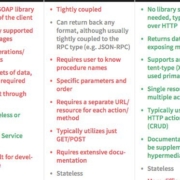A company’s leaders must prepare for the selection, achievement, and continuous improvements of Agile delivery. Only the leadership can evolve and continuously grow the environments in which their people function. Moreover, only these mentors can design the atmosphere that promotes high-performing Agile teams to thrive and deliver excellence. Agile leaders, therefore, must show smarter ways of working so that their people will discover from their personal and professional standards, mentorship and intrinsic motivation. The quest to become an Agilest does not need to be hard. Many leaders have to attempt a new method of management. The process will need to prepare, enable, and challenge their people to attain the highest potential through Agile teachings and practices.
What is not so apparent to leaders is that their people’s knowledge of the processes alone won’t be enough. Agile leaders must take an actual role to guide the new way of working. How many times have I heard from leadership that, "You have my support and contact me if you have any questions"? That way of thinking is a recipe for disaster with Agile. Agile leaders need to involve themselves directly on a daily basis. Get out and walk around, attend daily stand-ups, pop in on Sprint Planning sessions and come to the Sprint Reviews. You want your people to see you are involved with and care about the success of the implementation.
Source de l’article sur DZone (Agile)










